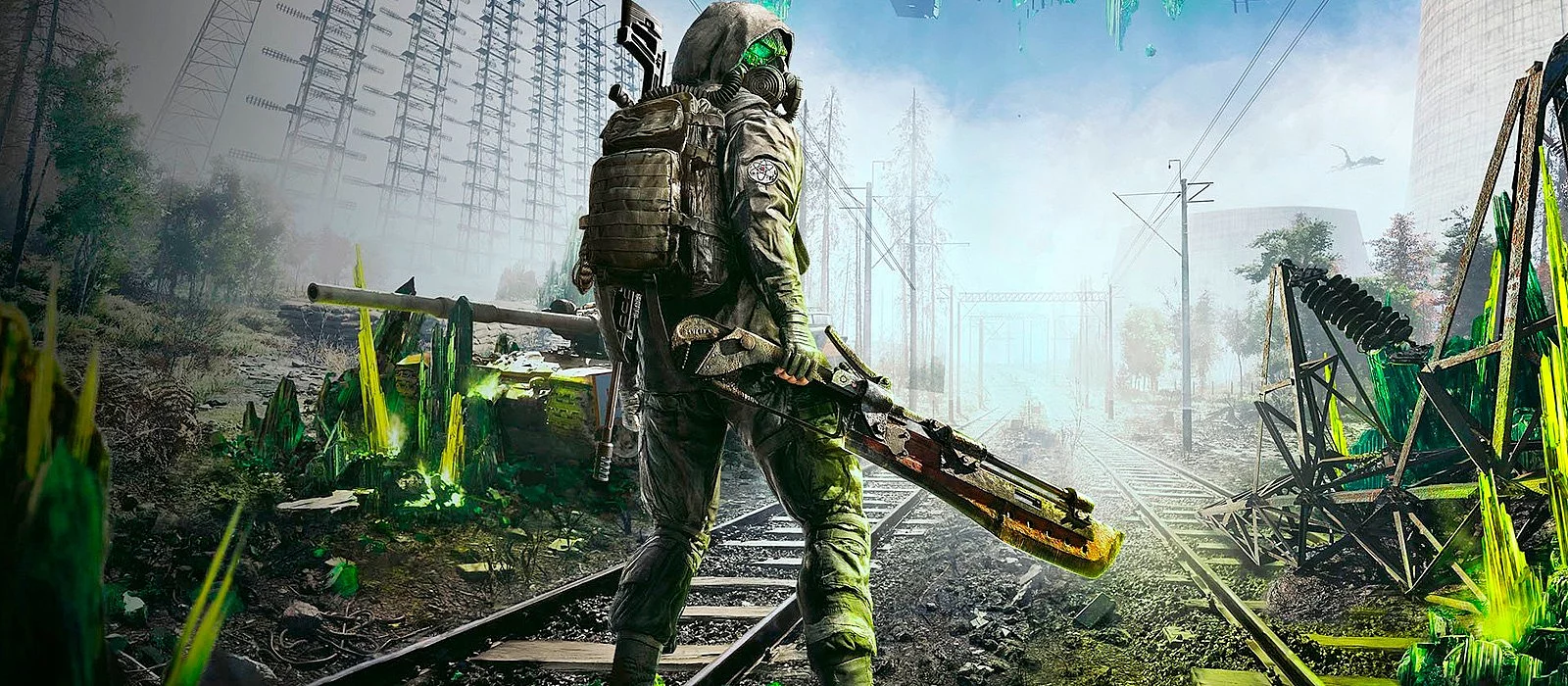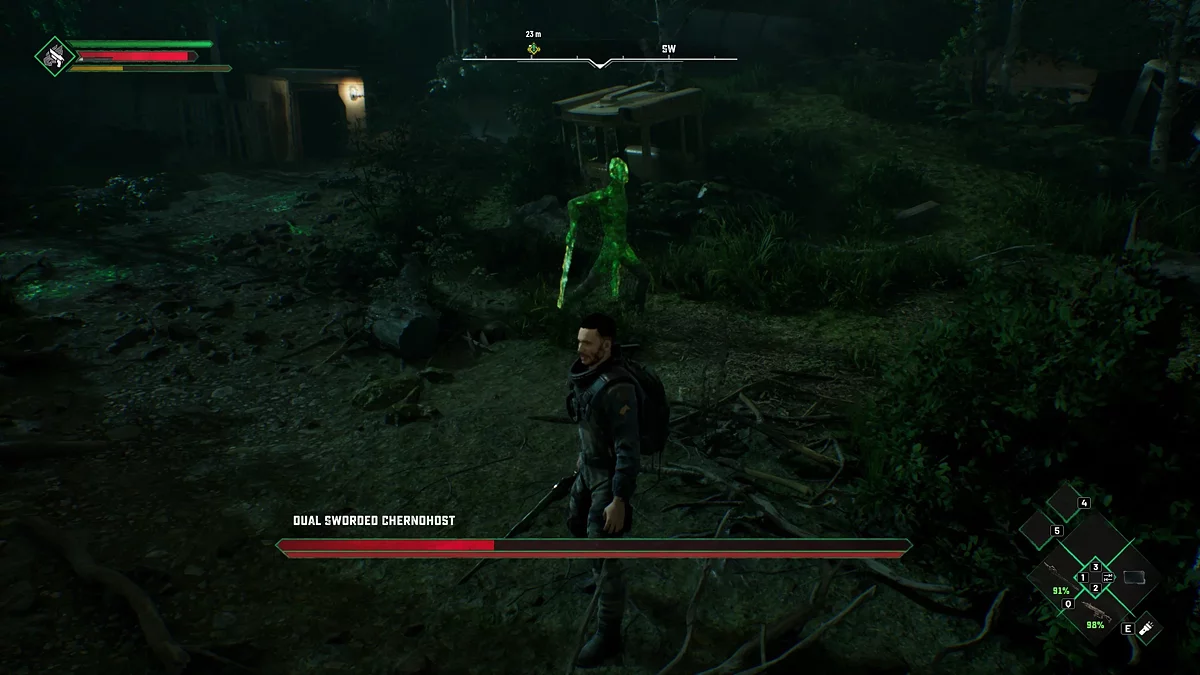First Look at Chernobylite 2: Exclusion Zone — A Sci-Fi Action RPG Inspired by STALKER

Ready to embark on a new journey through the Chernobyl Zone? On March 6, 2025, The Farm 51 will unveil Exclusion Zone — a sequel to the atmospheric Chernobylite, promising an even more immersive adventure. We've already tested the press demo and are eager to share what awaits you in this dark and mysterious world: new adversaries, various gameplay approaches, and the same attention to detail that made us fall in love with the original.
What's Chernobylite Doing in My Zone?
In the game's universe, the Chernobyl NPP accident was connected to a mysterious substance called chernobylite. It's not just radioactive material, but a substance capable of distorting space and time and creating parallel realities. The NAR private military corporation, which seized control of the power plant, actively experimented with this substance.
Exclusion Zone takes place eight years after the ending of the first Chernobylite. While in the original game, Igor Khimenyuk explored the Zone circa 2016, we now find ourselves in a radically changed 2024. The developers based the sequel on one of the first game's endings, where humanity not only failed to destroy chernobylite but learned to harness it.
A genuine technological revolution has occurred. Chernobylite became a source of free energy, enabling teleportation and anti-gravity technologies. It even allowed for human body modifications. What once seemed like science fiction has become commonplace, although the substance's structure remains a mystery.
What do you think should change in Chernobylite 2 compared to the original?
New Hero, New Problems
Exclusion Zone centers on Cole Grey, a British national. We meet him in his apartment, struggling with a personal crisis. The technological revolution sparked by chernobylite has left him jobless, while bills and family obligations remain. An unexpected opportunity arises — a contract with NAR, now engaged in chernobylite mining across parallel dimensions.
NAR's field base is located in Pripyat's former Energetik Cultural Center, with a massive chernobylite harvester ship hovering above the city. The Farm 51 maintained their approach to world-building — locations are accurately recreated based on real 3D scans of the Exclusion Zone, though Exclusion Zone's photorealism is currently lacking. The game runs on Unreal Engine 5, but the visuals in the demo were quite basic, with graphics notably requiring polish.
A Mercenary's First Steps
The recruit's initial task seems straightforward: Deploy into a parallel dimension, locate chernobylite deposits, mark them on the map, and return. If locals resist — eliminate the obstacle. After training at the field base and completing the first combat mission, regular service begins, lasting six months.
However, the situation evolves. Chernobylite becomes increasingly difficult to mine until scientist Kozlov — the antagonist from the first game — discovers a reality with unprecedented substance concentration. While we didn't get to meet Kozlov in the demo — he announces his finding over internal communications. Immediately after his announcement, something unexpected occurs: chernobylite seemingly comes alive and pulls NAR's base into this reality. The NAR harvester sustains damage, forcing the protagonist Cole to escape in a drop pod. The game begins with our landing in this distorted world.
After exploring the open world briefly, we receive intel and communicate with Leonid — a character deeply mutated by chernobylite but still rational. He directs us to Igor — the black stalker from the first part, who proves surprisingly friendly this time. From him, the hero receives an abandoned outpost — a starting point for upcoming adventures.
The demo ends here, leaving players with numerous questions about how engaging the full playthrough will be.
Gameplay Overview
At the NAR base in Pripyat, players are introduced to three gameplay approaches. These include classic, archetypal shooting; fairly simple melee combat based on normal and strong attacks, blocks, and rolls; and interesting «black magic» utilizing chernobylite energy. The latter allows casting both ice and fire projectiles, with power regenerating in radioactive zones. It's worth noting that all combat mechanics require significant refinement.

The game features six unique classes:
- Eliminator — A classic tank-berserker specializing in close combat. Features increased health and high melee damage but limited in other abilities
- Recon — A strong and observant character who advances despite obstacles. Excels at evasion and dealing damage from ambush
- Emissary — A mediator and diplomat with strong social or mental skills, a cunning manipulator who knows how to achieve goals
- Technician — A support/combat hybrid specializing in gadgets, drones, turrets, traps, and other mechanisms
- Scientist — Relies on strong intellect, can engage with corresponding class characters as equals, discussing chernobylite, parallel dimensions, and more
- Chernomancer — A magical class combining weapon mastery and magic. Their special ability Converter transforms received damage into chernobylite essence
While we couldn't test all classes, the differences between them are quite noticeable in both gameplay and progression, though the Chernomancer lacks early-game opportunities. As typical in RPGs, classes build upon basic characteristics and attributes:
- Strength
- Survivability
- Cunning
- Psyche
- Perception
- Intellect
The game features 25 statistical parameters, including familiar health, strength, stamina, and essence (special chernobylite energy), as well as various multipliers affecting melee damage, weapon effectiveness, and elemental damage.
Players can earn points and unlock perks in three independent branches:
- Mutant: Zone survival skills and item handling
- Scientist: Item property study, crafting, and base management
- Mercenary: Combat skills, territory exploration, weapon and hand-to-hand combat proficiency
The skill tree immediately reminded us of Far Cry 3 — a worthy inspiration. This system promises extensive possibilities for creating unique builds, though this content isn't available in the demo.
Adversaries
The demo featured three enemy types:
- Humanoid mutants altered by chernobylite. Based on trailers, they'll constitute the majority of opponents. Conceptually, they mirror Left 4 Dead with progression from regular specimens to powerful bosses
- Raiders — ordinary humans hostile to the player. Conceptually similar to Fallout raiders. In the demo, a trio lounged near the base gates, and during this article's preparation, another major patch improved these opponents' behavior
- Unusual creatures resembling aliens. This refers to the flying «wasteland demon» — something between a dragonfly and a tentacle — capable of firing chernobylite beams. Perhaps it's a representative of the race that created chernobylite?
Mission gamedesign is very basic — clear area, find point, defend point.
Equipment and Base
The game retained the equipment system from the first part, including weapons, armor, and consumables. Moreover, this aspect will clearly expand, transforming Chernobylite into a Borderlands-style looter-shooter. Ridiculously large containers with useful items — from weapons to medical supplies — are scattered throughout the world. Enemies also drop loot. Characters have dozens of equipment slots affecting characteristics and protection.
Base building became a key gameplay element. This mechanic resembled a similar feature from Fallout 4. Various-sized rooms can be built around the main shelter, equipped with workbenches for creating weapons, armor, medical supplies, and other useful equipment.
Game World
The game world is better judged by trailers than the demo — the playable area in the demo is extremely limited: a corridor about a mile and a half long, featuring three pine trees and a ravine. Deviate from the path, and it becomes obvious that the location is surrounded by a giant chernobylite wall preventing further progress.
Graphics glitches are present. During the demo playthrough, the location looked solid — dense forest, thick grass, tilted houses, excellent lighting, though the green color filter is excessive. Upon reentry, we encountered basically bare terrain (basic surface texture without content) with a couple of structures, enemy spawn points, and individual trees.
Atmosphere: From Zone to Multiverse
Does what we played resemble S.T.A.L.K.E.R.? Not at all. Moreover, Chernobylite is no longer just a game about the Chernobyl Zone, but an independent multiverse with numerous realities, taking it far from classic stalker stories.
It's interesting how two game series move in opposite directions. Fans remember what S.T.A.L.K.E.R. was in GSC's early concepts — with pyramids and combat robots — before acquiring its familiar post-apocalyptic Zone appearance. The Farm 51 team moves in the reverse direction: while the first Chernobylite tried to create the atmosphere of «that stalker,» Exclusion Zone boldly steps into its own science fiction, emphasizing crafting, grinding, and dynamic combat.
The multiverse becomes the central narrative theme from the first minutes. Igor talks about multiple parallel worlds where chernobylite's fate differed: in some, it became a deadly poison, in others — a technological progress miracle. Everything depends on how it's interacted with. Additionally, after class selection and during augmentation installation, an unexpected encounter occurs: a chernobylite crystal takes on Tatyana's voice from the first part and attempts to establish contact with the player. How will the connection between dimensions be revealed? Is Igor in the sequel the real Igor from the first part? We'll only get answers to these questions upon the full version's release.
How do you feel about the idea of transforming the game into a more sci-fi action RPG?
***
While much may change before the March 6 Early Access release, it's already evident that Chernobylite 2: Exclusion Zone has grown into an ambitious project, with potential to engage players for a long time.


























































